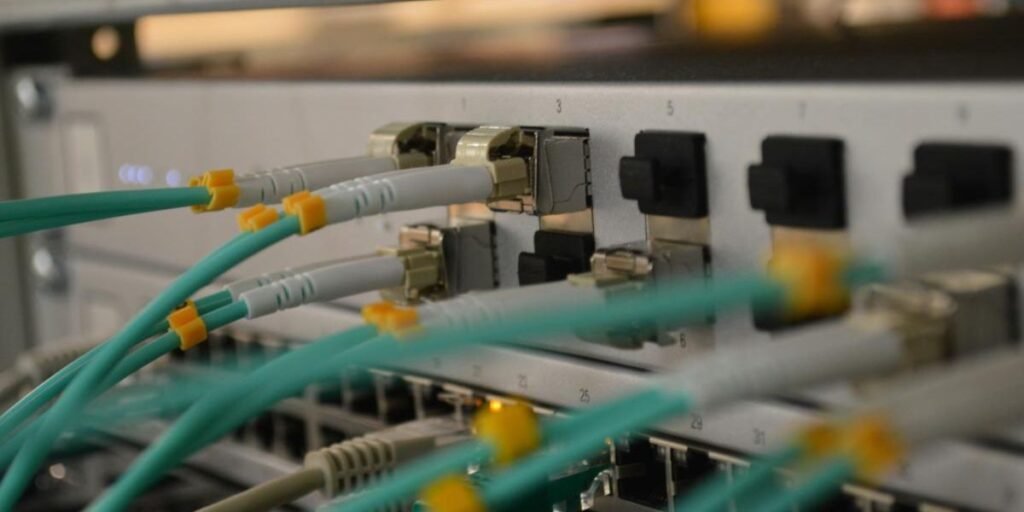Skip to the good bit
ToggleThis is where mesh networks step in, promising a seamless WiFi experience. Mesh networks use multiple nodes to create a wide and reliable network blanket that ensures coverage across the entire living space.
In our exploration of mesh networks, we consider not only their ability to reduce or eliminate areas with poor connectivity but also weigh the potential downsides. It’s important to understand the implications of installing a mesh WiFi system at home, from its performance benefits to the costs involved. With a fine balance between convenience and investment, mesh networks offer a glimpse into the future of home internet. Let’s navigate through these considerations to determine if mesh WiFi is the right solution for us.
Benefits of mesh networks
We’ll explore some significant advantages that mesh networks offer for home internet setups. These benefits tackle common WiFi issues such as coverage drops and network management.
Improved coverage
Mesh WiFi systems shine in providing comprehensive coverage across your home. Unlike traditional routers, which limit coverage based on their location, mesh networks distribute several access points throughout the area. This setup ensures that we get a strong signal no matter where we are in our house, making dead zones a thing of the past.

For a more concrete understanding, consider a scenario where your home office is quite far from the main router. With a traditional setup, you might experience weak signal strength. A mesh network, however, places additional nodes closer to your office, ensuring that the WiFi coverage is both stronger and more reliable.
Seamless connectivity
One of the core strengths of mesh networks is the promise of seamless connectivity. As we move around our home, mesh networks allow our devices to automatically switch (or ‘hand off’) to the nearest node without dropping the connection or requiring manual intervention. This creates a smooth and uninterrupted experience whether we’re on a video call or streaming our favorite show.
Picture walking through various rooms of your home while on a video call. With mesh networks, you won’t experience any hiccups or connectivity issues because your connection is transferred from one node to another without noticeable interruption.
Self-healing capabilities
The self-healing feature of mesh networks is a standout benefit. Mesh networks can automatically reroute data if one node fails, maintaining stability and uptime. This self-healing process ensures that our internet connection remains intact, making mesh networks particularly reliable.

For instance, if a node accidentally gets unplugged or suffers a hardware failure, the mesh network doesn’t collapse. Instead, it reroutes the data through the other operational nodes, preventing downtime and keeping us connected.
Considerations of Mesh Networks
When we talk about mesh networks for home internet, we’re looking at three crucial factors: cost, setup complexity, and scalability. These aspects can significantly impact our decision-making process, so let’s explore what each entails.
Cost aspects
One cannot ignore the initial investment required for setting up a mesh network. Unlike traditional routers, mesh systems usually come with multiple units. It’s this multi-device setup that enhances coverage but also contributes to a higher price tag. For example, starting costs for mesh systems can be around $300, reflecting both the advanced technology and additional hardware.
Complexity in setup and management
Mesh networks boast user-friendly reputations, but their setup and management can present complexities not found with conventional routers. Although many systems are managed via apps that guide users through the setup process, placing nodes optimally to ensure the best coverage and performance does require a bit of finesse and technical knowledge.

Scalability
Scalability is a significant advantage of mesh networks. If our coverage needs increase, we can usually add more nodes to our existing system. This ability to expand makes mesh networks future-proof, ensuring that as our homes grow or our needs change, our internet coverage adapts accordingly.
Challenges of mesh networks
Before we dive into the specifics, let’s acknowledge some common challenges that we might encounter with mesh networks. While they are great for extending coverage, there can be issues with interference and the reliability of your network. We also need to be mindful of security concerns because every device in the network can potentially become a target for threats.
Interference and reliability issues
Mesh networks rely on multiple nodes to extend the WiFi signal throughout our home. However, interference from other devices and obstacles like walls and appliances can affect the network’s performance. This can result in uneven reliability, where some areas might experience slower speeds or drop-offs in connection. For instance, if too many devices are connected or there’s an unexpected disturbance in one of the nodes, our network could suffer slowdowns or temporary disconnects.
Security concerns
In a mesh network, each node acts as a point of access. While this improves coverage, it can also leave our network open to vulnerabilities if not secured properly. Each additional node is a potential entry point for cyber threats, and we must ensure that firmware is regularly updated to combat security issues. Mesh networks are generally managed by vendors that provide updates to address these concerns, but it’s something we should monitor to maintain a secure home network.
Frequently asked questions
What are the potential drawbacks of implementing a mesh WiFi network at home?
Mesh networks can be more costly than traditional routers due to the need for multiple nodes for coverage. Additionally, network complexity can increase with the number of nodes, possibly leading to more upkeep and management. Learn more about these drawbacks from mesh wifi pros and cons.
How does a mesh network improve home internet connectivity compared to traditional WiFi?
A mesh network offers comprehensive coverage throughout your home, eliminating dead zones and providing stronger connections for all devices. Connectivity is seamless as you move around, with devices automatically connecting to the nearest node. Insight into this improvement can be found in our understanding of mesh networks.
In what scenarios might a mesh network be less advantageous than a standard router setup?
For smaller homes or situations where a single router can provide complete coverage, the additional expense and technology of a mesh network might not be necessary or advantageous. This scenario is discussed in the context of mesh networks and their alternatives.
What factors should be considered when deciding between a mesh network and a WiFi extender?
When deciding, consider the size of your home, the layout, the types of walls, and overall performance needs. Mesh networks generally offer better performance and easier management than extenders. For detailed comparisons, review the information on mesh router vs. WiFi extender.
How does the speed and performance of mesh networks compare with traditional routers?
Mesh networks can provide comparable or superior speeds to traditional routers, especially in homes where a single router can’t cover all areas efficiently. The distributed nature of mesh networks can effectively manage bandwidth, offering improved performance where it’s needed. A detailed explanation can be found on mesh network performance.
Are there any particular scenarios where a mesh network setup might not be the ideal choice?
Mesh networks might not be ideal for users who do not require extensive coverage or for those looking to minimize technology costs. The initial investment is higher, and for those with simple connectivity needs, a traditional router or a basic WiFi extender might suffice. This aspect is discussed in terms of the pros and cons of mesh WiFi systems.









